| Item Master defines the items that will be tracked in inventory. Basic information about the item kept that applies to an item regardless of location.
|
Click image for larger view
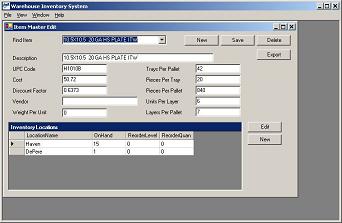 |
Click image for larger view
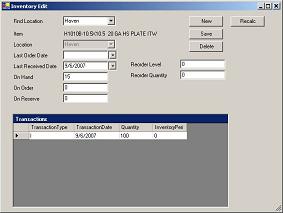 |
An inventory record holds the counts for an item at a particular location. Each location can define its own reorder quantity, and its own reorder level. It also shows the transactions associated with that location, the transactions that affect the on hand volume. |
| A Location defines a physical place where inventory is kept. the combination of an item and a location make up a distinct inventory record. When looking at a location, you can see all the items that are held there, and what their current on hand values are. |
Click image for larger view
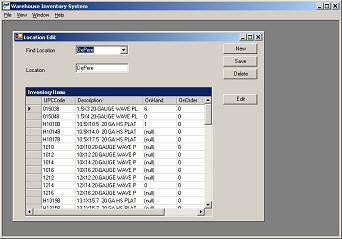 |
Click image for larger view
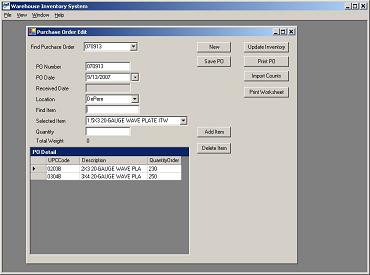 |
A Purchase Order is how in hand quantities are increased. When you create a purchase order you are asking for items to be added to your inventory, so this makes adds to the on order quantity. When the items are actually received, the on order quantity is decreased and the on hand quantity is increased. A Pocket PC scanner can be used to check current on hand levels and comapre that value to the reorder level, and add lines to the purchase order for the items that are below their reorder level. |
| A purchase order can be printed to create a paper trail. Each item is listed with its order quantity and the vendor assigned to it. |
Click image for larger view
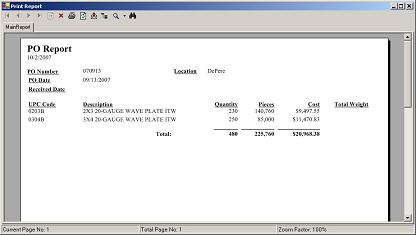 |
Click image for larger view
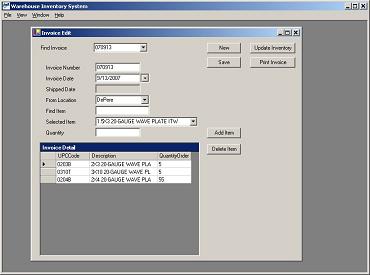 |
Invoices are how items are removed from inventory, the idea is that you will invoice someone when you ship them items from your inventory. When an invoice is created, it adds to the on reserve quantity for each item. When the items are actually shipped, the on reserve quantity is decreased and the on hand quantity is decreased. |
| The invoice print is used to create a paper trail of what is sent out or used.td>
| Click image for larger view
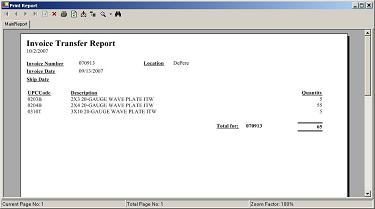 |
Click image for larger view
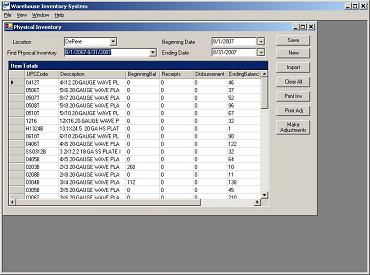 |
Physical Inventory is the process of capturing what your beginning balances are of each item, track how much you added to inventory (purchase orders), and how much you took out of inventory (invoices), and what you have left on hand, the ending balance. This ending balance is comapred to what the system thinks you have on hand, if they match, everything is good, if they do not, you need to determine why. Sometimes this difference is on purpose, for example, if you only track purchase orders and not usage, then the difference is the actual usage. This difference can be applied to inventory, and the on hand will be adjusted to reflect the actual ending balance. |
| The results of a physical inventory can be printed, so it can be used for tracking down the differences. |
Click image for larger view
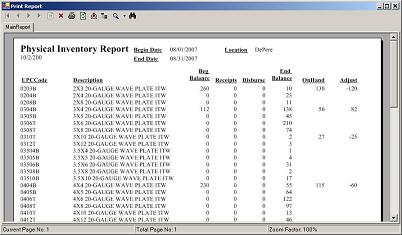 |
Click image for larger view
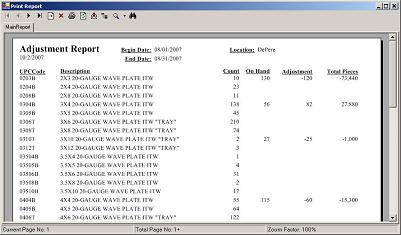 |
The adjustment report focuses on the ending balance, the count, and the differences of them. This can be helpful when using the adjustments for tracking usage. |
| Pocket PC Scanner Main Menu
This is an example of a Pocket PC scanner program that is used to count inventory on hand values. An item file can be imported to be used to validate the items scanned, and the counts taken are exported any time the counts need to be saved. Clicking the Inventory menu item will open the next screen. The main screen also keep track of how many scans were done to give an idea of how much has been done. |
Click image for larger view
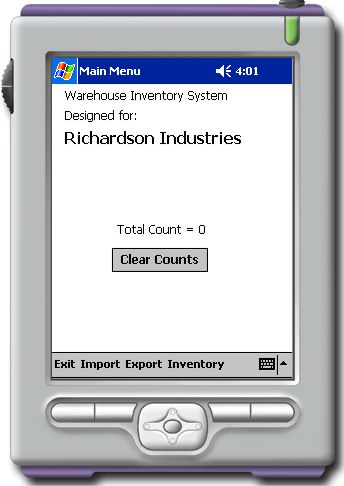 |
Click image for larger view
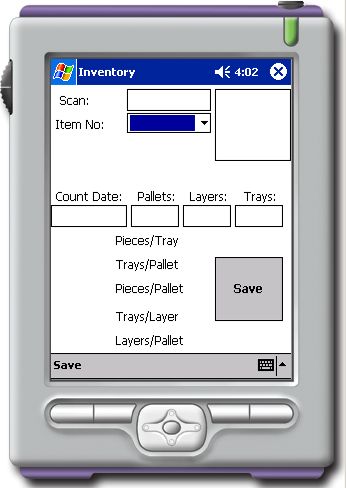 |
Pocket PC Scanner Scan Page
This screen is where the work is done. When a scan takes place, the value of the scan appears in the scan field, then it is validated against the item list. When it is found the description and other values are displayed on the screen. The quantity fields are then filled in, and when the save button is pressed, the item, date, and quantities are saved. We keep the last four scans shown on the screen, to help keep track of where you left off. |